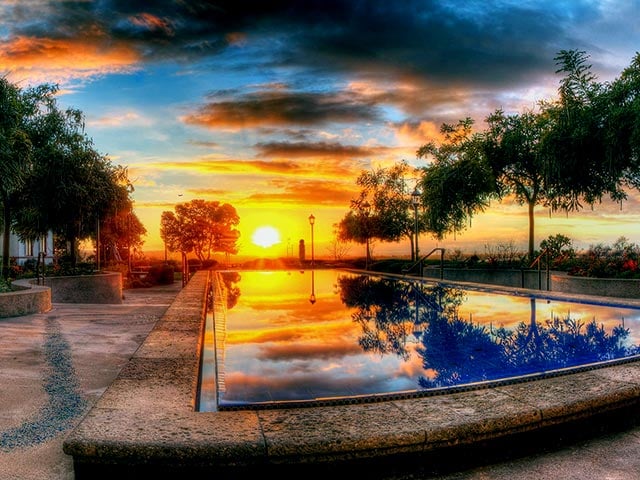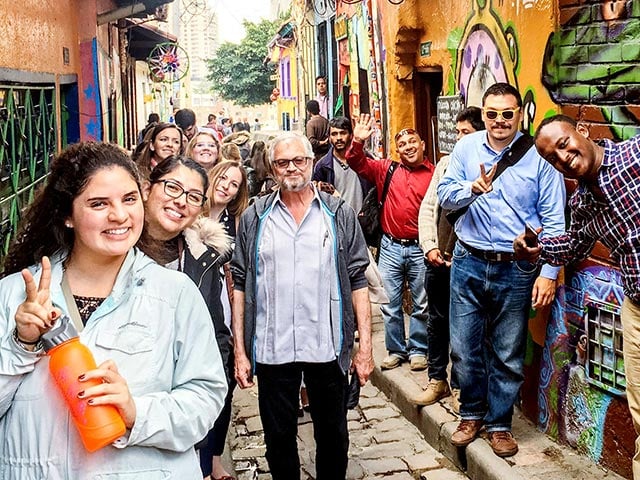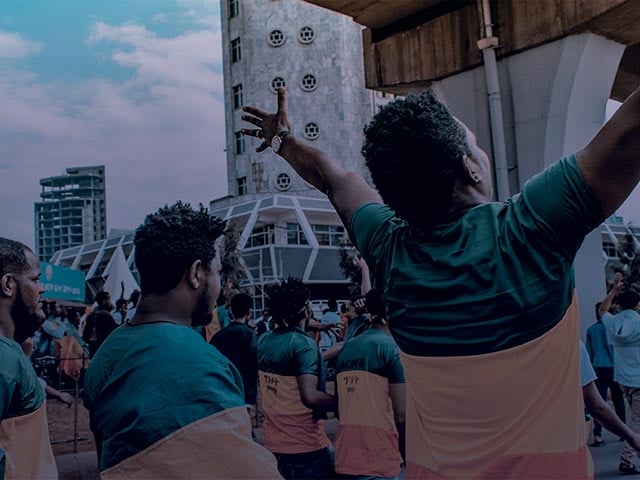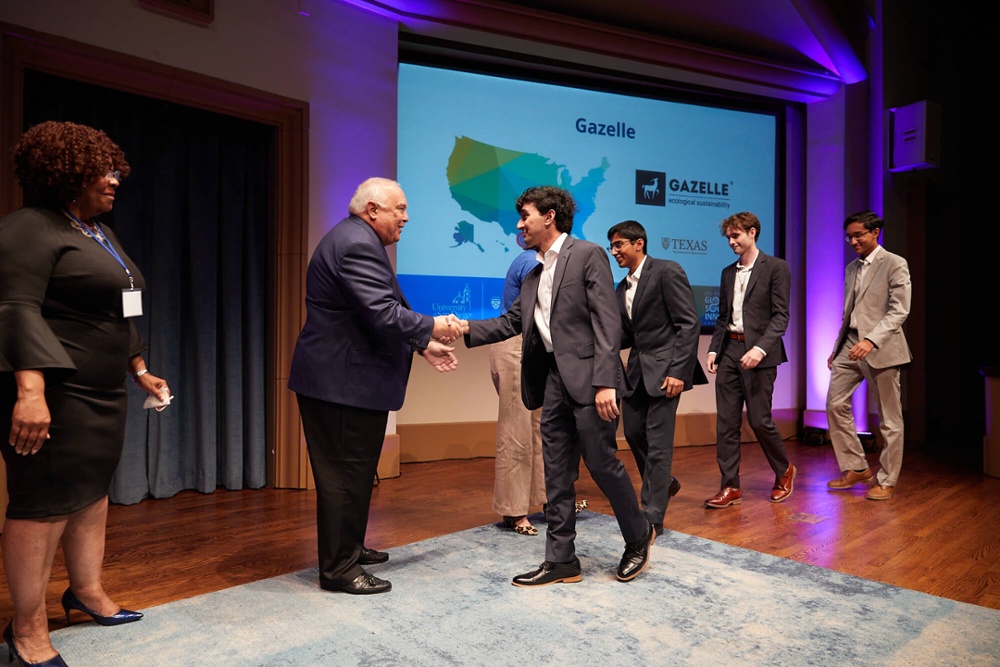When My Internship Went Remote, I Went Mobile
The following post was written by Master's in Peace and Justice student Shannon McNamara.
For my Master of Arts in Peace and Justice program, I was required to participate in an internship over the summer of 2020. From the beginning of my graduate program, I was expecting to land a dream internship opportunity with a reputable organization in the field of humanitarian affairs and human rights, and I was excited to test my skills on a larger scale.
My remote, mobile office during my summer internship with the United Nations.
In the fall of 2019, the first semester of my program, we were told to start looking for an internship immediately. Opportunities filled up fast, and we needed to get a jump start in order to remain competitive. I coordinated, collaborated, and worried with fellow classmates about application deadlines, position requirements, and whether we were pushing ourselves enough.
In an attempt to apply for an internship that was my dream, one that I was unsure if I would get, I applied to be a Humanitarian Affairs Intern with the United Nations in the Office for the Coordination of Humanitarian Affairs (OCHA). Weeks went by without word. I almost forgot about the UN application as I started to apply for other internships as back-up plans. I heard back from other internships, started narrowing down which one was the best fit for me and my career goals, and which position would provide me with the learning opportunities I needed.
Then I got the email. The U.N. wanted me. Not only that, but they also wanted me in Geneva, Switzerland! I was going to be working in my dream field, with a dream team, in a dream place. What more could I possibly ask for? I booked my flights, I bought my visa, I planned housing arrangements, I connected with other interns from all over the world that would be in Geneva at the same time. My plans were set, my bags were practically packed, and I was ready to go.
But then, the world took a turn as the coronavirus pandemic emerged, and for two months the world shut down, classes shifted to remote learning, internships were canceled or postponed, and the future was very much uncertain.
Then, in May, I learned that the U.N. was accommodating interns during the current pandemic by making all internships remote. In a matter of two months, my dream international internship turned into an internship I would be conducting from my tiny, one-bedroom apartment in San Diego.
Now, I am very grateful to the U.N. for allowing me to continue my internship remotely. But the expectations I had envisioned for my internship changed drastically. I spent the first month of my internship alone in my apartment, waking up at 4 a.m. to make it to meetings happening half a world away, on a nine-hour time difference. I sat at my computer virtually meeting and greeting Humanitarian Field Officers. I sat in on high-profile meetings with heads of states, all from the comfort of my own home.
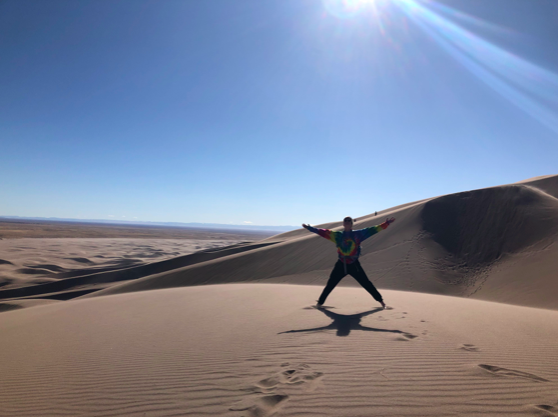
My victory pose at the top of the Great Sand Dunes National Park and Preserve.
And then one day I realized I was missing a huge portion of my internship. I was missing out on the travel, the promise of networking in Geneva with people from all walks of life. In an attempt to bring back that sense of travel I so desperately looked forward to, I decided to change how I worked remotely. After all, if I was remote, why not work wherever I please? Why stay in San Diego? If I can do this work anywhere, why not cash in on that advantage (one that is not guaranteed to happen again, given the circumstances). So I packed up my life into a converted van and hit the road in search of beautiful scenery to conduct my internship.
I started by spending time in Southern California, visiting the Salton Sea and hiking in Joshua Tree National Park, where I shared my internship with the cacti and lived in two separate deserts, the Mojave and Colorado. From there I went to Arizona where I saw some of the most beautiful sunsets among the red rocks, sharing my readings on international surge support with the beautiful scenery at the Garden of the Gods. Onto New Mexico, where I hiked to remote hot springs and bathed in the Rio Grande River. In Colorado, I visited the Great Sand Dunes National Park and Preserve, traversing the sand dunes at sunset. I was able to work on cutting edge programming for international disaster assessment and coordination during a pandemic atop the sand dunes.
Onto the Midwest, where I stopped in South Dakota at Mount Rushmore, and then onto the Badlands to hike and share my learnings on capacity assessments in the time of remote work.
 My closest coworker, Barry the moose.
My closest coworker, Barry the moose.
Finally, I sit writing this in Montana, where I have attended meetings in the mountains, seen the most spectacular night skies filled with stars, and where my closest coworker has been a moose. I've worked remotely from a van, in parks, national forests, national monuments, and some of the most remote places I’ve ever visited – all while learning from the smartest minds in humanitarian affairs and helping to pioneer new international response coordination amid a pandemic.
--
Want to follow in Shannon's footsteps? Learn more about the Kroc School's Master of Arts in Peace and Justice program.
Contact:
Justin Prugh
jprugh@sandiego.edu
(619) 260-7573

About the Author
The Joan B. Kroc School of Peace Studies (Kroc School) at the University of San Diego is the global hub for peacebuilding and social innovation. Founded in 2007, the Kroc School equips the next generation of innovative changemakers to shape more peaceful and just societies. We offer master's degrees in peace and justice, social innovation, humanitarian action, conflict management and resolution, and a dual degree in peace and law — programs that have attracted diverse and dynamic students from more than 50 countries. In addition to our graduate programs, the Kroc School is home to the Kroc Institute for Peace and Justice (Kroc IPJ). Founded in 2001, the Institute supports positive change beyond the classroom. Through groundbreaking research, experiential learning, and forward-thinking programs, the Kroc School and Kroc IPJ are shaping a future in which peaceful co-existence is the new normal.

